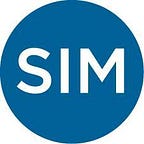According to the Society for Information Management’s (SIM) annual IT Trends Study, which surveys over 1,200 IT leaders, CRM is the fifth largest IT investment this year, and it’s remained in the top 10 since 2010. As cloud-based CRM has become more affordable, more and more small-to-medium-sized businesses are embracing the technology in order to develop closer relationships with their customers.
And if you’re searching for a CRM, chances are you’ll end up considering Salesforce as one of your options. Launched in 1999, Salesforce has become one of the dominant CRM players, and it’s been aggressively targeting new customers, both large and small.
So let’s say you’re a company that purchases a few Salesforce licenses and distributes them to your sales team to test the software out. And let’s also say your team comes back to you and says they love the product and that they want to roll it out to the company at large. Now you have to negotiate a three-year contract for hundreds of licenses. So how do you successfully gain leverage with a CRM company that generates $6.6 billion in annual revenue?
That’s just the sort of question Randy Roth will be answering in a talk for ProcureCon IT Sourcing, an Austin-based conference taking place in June (interested attendees can sign up over here). Roth is the Chair of SIM’s IT Procurement Working Group and the president of Seprio, an IT sourcing consultancy. For the past decade, Seprio has helped a number of clients during their Salesforce negotiations. Here are five pieces of advice he gives to any client embarking on this sourcing journey:
Engage a sourcing expert (internal or external) from the very beginning
Typically, the initial Salesforce engagement will take place within the sales or marketing teams. Those teams might be tempted to purchase a few licenses to test out the product, but this actually reduces leverage if they’re using them in a production environment. Instead, the negotiations need to move from the sales and marketing teams and be placed firmly in the sourcing department right away. This will instantly signal to the Salesforce sales rep that your company is serious about getting the best rate.
[LIKE THIS ARTICLE SO FAR? THEN YOU’LL REALLY WANT TO SIGN UP FOR OUR IT LEADERSHIP NEWSLETTER OVER HERE]
The sourcing department will work with the internal marketing and IT teams to lay out a strategy on how the company wants to go forward with the CRM and start the negotiations from that strategy framework. This will allow the company to start using the product at a small level and then grow to a larger level over a multi-year period.
Perform a cost-benefit analysis
Too many companies purchase a piece of software before performing a cost-benefit analysis and quantifying the monetary value it’ll bring. Once you know that value, only then can you assess what you’ll be willing to pay for it. “Companies need to get better at bringing in the finance department to say, ‘OK, we’re going to spend another $1.2 million on a CRM this year, how do we pay that back? How do we justify that investment?’” said Roth.
Put out an RFP
In order to have leverage in a negotiation, the vendor needs to believe you’d be willing to walk away. And there’s no better way to signal that willingness than to put out an RFP. “If the company is willing to go through an RFP and willing to potentially switch, then Salesforce knows they need to take that to heart,” said Roth. “Microsoft has been hot on replacing Salesforce, and they’ll come in at a much better rate if they know they have a chance to replace an existing product. Now, some would argue that Microsoft does not have the same capabilities, but they’ve been increasing their capacity dramatically over the last several years, and they’re getting close if they’re not all the way there.”
Negotiate early
A Salesforce contract typically lasts three years before it’s up for renewal, and if you wait until six months before the contract expires to begin negotiating the next contract, Salesforce reps will know you don’t have enough time to find (and move to) another vendor and will call your bluff. Roth recommends using the future growth of your company and the promise of expansion as a bargaining chip. “You can go to Salesforce and say, ‘I’m planning to grow my team this year by 20 percent, so what better deal can you give me if we purchase more licenses?’” he said. “In most cases they’ll be willing to renegotiate.”
Negotiate for each module
With the rise of Software as a Service (SaaS) and best-of-breed technology, a company has a lot of choices when it comes to software solutions that it can plug into Salesforce. How many Salesforce modules you end up using will determine the price you pay for each license. “Some companies are willing to go with the ‘suite’ approach: once Salesforce, always Salesforce,” said Roth. “Other companies will say, ‘We’re going to pick the best product for our needs at this point in time.’ The companies that are willing to look at everything out there instead — as opposed to the ones that only pursue Salesforce — they’re the ones with the most leverage, because if they’re willing to go buy somewhere else, they’re going to end up getting a better deal.”
The Society for Information Management (SIM) is the world’s premier organization for IT leaders. Follow us on Twitter and LinkedIn. Visit us at simnet.org.
